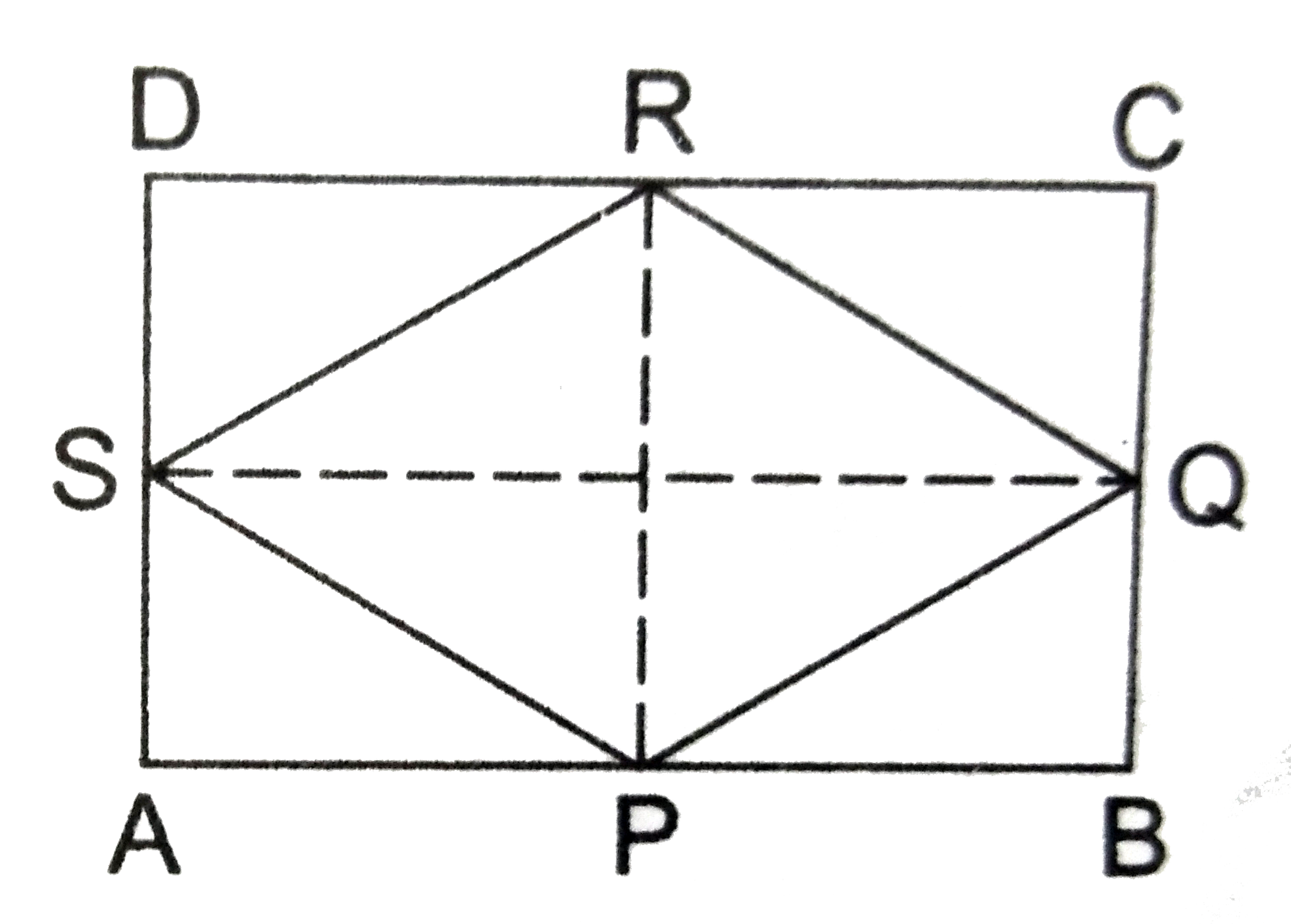The figure formed by joining the mid-points of the adjacent sides of a rhombus is a square (b) rectangle (c) trapezium (d) none of these
By mid-point theorem
In △ABD, EH| |BD (Mid-point theorem)
In △CBD, FG| |BD (Mid-point theorem)
In △ACD, GH| |AC (Mid-point theorem)
In △ABC, EF| |AC (Mid-point theorem)
As, AC⊥BD
∴ adjacent sides of quadrilateral EFGH are perpendicular Rectangle .
Hence, option (b) is correct.
Topper's Solved these Questions
Similar Questions
The figure formed by joining the mid-points of the adjacent sides of a quadrilateral is a parallelogram (b) rectangle square (d) rhombus
View SolutionThe figure formed by joining the mid-points of the adjacent sides of a quadrilateral is a parallelogram (b) rectangle (c) square (d) rhombus
View Solution
Knowledge Check
- Question 1 - Select One
The figure formed by joining the mid-points of adjacent sides of a rhombus is
Aa squareBrectangleCtrapeziumDnone of these - Question 2 - Select One
The figure obtained by joining the mid-points of the sides of a rhombus, taken in order, is
Aa rhombusBa rectangleCa squareDany parallelogram - Question 3 - Select One
The figure formed by joining the midpoints of the adjacent sides of a rectangle of sides 8 cm and 6 cm is a
 Arectangle of area 24cm2Bsquare of area 24cm2Ctrapezium of area 24cm2Drhombus of area 24cm2
Arectangle of area 24cm2Bsquare of area 24cm2Ctrapezium of area 24cm2Drhombus of area 24cm2
The figure formed by joining the mid-point of the adjacent sides of a parallelogram is a rectangle (b) parallelogram (c) rhombus (d) square
View SolutionShow that the quadrialteral formed by joining the mid-points of the consecutive sides of a rhombus, is a rectangle.
View SolutionShow that the quadrilateral, formed by joining the mid-points of the sides of a square, is also a square.
View SolutionThe figure formed by joining the mid-points of the sides of a quadrilateral taken in order is
View SolutionThe figure obtained by joining the mid-points of the adjacent sides of a rectangle of sides 8 cm and 6 cm, is
View Solution

